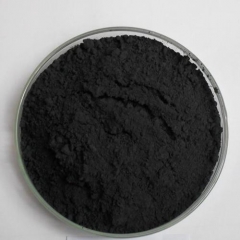British media reported that scientists have made a major breakthrough - the conversion of radio signals into electricity, popularly speaking, that is, power generation through WiFi! Then, in the not too distant future, perhaps for a lifetime, we may be able to see battery-free mobile phones, battery-free laptops.
MoS2, is a new two-dimensional material and one of the thinnest semiconductors in the world. It has semiconductor and photoelectricity, diamagnetic, and is used as a linear photoconductor or a P-type or N-type semiconductor with rectification and exchange, can work.

Recently, the British "Daily Mail" reported that scientists in the United States have developed a device, a device that can provide battery-free energy for smart phones, notebook computers and wearable technology - "silicon rectifier diode antenna" ".
According to the report, in fact, all antennas can generate electricity, but the amount of electricity generated is generally very small. In this study, a silicon rectifier diode antenna produced approximately 40 microwatts of power when exposed to a WiFi signal of approximately 150 microwatts. According to experts, these lights are enough to light up the display or activate the chip of a mobile phone.

However, electronic enthusiasts should also know that the electricity obtained from radio waves appears in the form of high-frequency alternating current, which needs to be converted into direct current by a rectifying and filtering device to be better used by us. Among them, the semiconductor in the above-mentioned silicon rectifier diode antenna, molybdenum disulfide, plays a role.
In other words, is this molybdenum disulfide? In fact, everyone is more familiar with graphite. Molybdenum disulfide has a hexagonal layered structure similar to graphite. Molybdenum disulfide, MoS2, is a new two-dimensional material and one of the thinnest semiconductors in the world. It has semiconductor and photoelectricity, diamagnetic, and is used as a linear photoconductor or a P-type or N-type semiconductor with rectification and exchange. Can work. Therefore, it can be used to manufacture silicon rectifier diode antennas.

In fact, at present, molybdenum disulfide is becoming one of the hotspots in the field of materials science at home and abroad. why? Because MoS2 is also one of the most smooth solid metal lubricants recognized in the world, it is also the most widely used solid lubricant. As early as the mid-19th century, molybdenum disulfide has been used as a lubricant for carriage bearings. In December 2015, a domestic lubricant company developed a molybdenum disulfide nano-lubricant for automobiles, making China the third country in the world with molybdenum disulfide nano-synthesis technology after the United States and Germany.
 TRUNNANO (Luoyang Trunnano Tech Co., Ltd ) is a professional Molybdenum disulfide manufacturer with over 12 years experience in chemical products research and development. If you are looking for high quality Molybdenum disulfide, please feel free to contact us and send an inquiry.
TRUNNANO (Luoyang Trunnano Tech Co., Ltd ) is a professional Molybdenum disulfide manufacturer with over 12 years experience in chemical products research and development. If you are looking for high quality Molybdenum disulfide, please feel free to contact us and send an inquiry.



